- Home
- Alison Weir
Elizabeth of York Page 10
Elizabeth of York Read online
Page 10
On November 10, 1480, Elizabeth Wydeville gave birth to her tenth and last child at Eltham Palace. It was another girl, who was called Bridget, an unusual choice of name that had no royal precedent but was perhaps chosen by Cecily, Duchess of York, who cherished a special devotion to St. Bridget of Sweden, foundress of the Bridgetine order, in which the duchess took a particular interest.83 Again Cecily’s influence can be detected, for Elizabeth herself would grow up with a deep reverence for St. Bridget, a fourteenth-century visionary who was celebrated for her piety and charity.
Choosing the name of a saint who left the royal court of Sweden to found a monastic order suggests that the King and Queen decided from the first that they would devote this daughter to God. It was not unusual for wealthy medieval parents to do that, as a gesture of thanksgiving, or to lay up treasure for themselves in Heaven. Their daughter would have no choice in the matter.
On the morning after the birth, St. Martin’s Day, Elizabeth stood godmother to her new sister at her christening in the Great Chapel at Eltham. A hundred “knights, esquires, and other honest persons” entered the chapel first, carrying unlit torches, then came Thomas FitzAlan, Lord Maltravers, bearing a basin and towel, Henry Percy, Earl of Northumberland, with an unlit taper, and John de la Pole, Earl of Lincoln, bearing the salt. There followed other peers, among them the young Duke of York, Lord Hastings; Thomas, Lord Stanley; and Richard Fiennes, Lord Dacre, the Queen’s chamberlain. Then came the Queen’s sister, Margaret Wydeville, Lady Maltravers, wearing “a rich white cloth pinned over her left side” and carrying the chrisom. Margaret Beaufort, the other godmother—no doubt chosen because in 1472 she had married Lord Stanley, a close associate of the Wydevilles—carried the Princess Bridget beneath a canopy borne by three knights and a baron. Elizabeth followed with Dorset and the Duchess of York. William Wayneflete, the octogenarian Bishop of Winchester, was the godfather, and Edward Story, Bishop of Chichester, officiated. “My lady the King’s mother and my Lady Elizabeth were godmothers at the font,” and a squire held the basins for them. At the moment of baptism, the knights and esquires lit their torches and the heralds donned their tabards. The baby was taken up to the altar to be confirmed, and then into an anteroom where the godparents presented their “great gifts,” whereupon she was borne back in procession to the Queen’s chamber to be blessed.84
Young York’s wife, Anne Mowbray, was not present. Possibly she was unwell, for sometime between January 16 and November 19, 1481, she died at the palace of Placentia at Greenwich, aged only eight. She was given a lavish funeral and buried in the chapel of St. Erasmus in Westminster Abbey.
In June 1480, Margaret of Burgundy had visited England with a view to enlisting Edward IV’s support against France and arranging a marriage between Maximilian’s son Philip and Anne of York. Aware of her intentions, Louis sent envoys to England with Edward’s pension and the offer of an extra 15,000 crowns [£1,892,210] a year for Elizabeth’s maintenance until her marriage. That placed Edward in an ideal situation for bargaining with Burgundy, and that August he signed a treaty with Maximilian, by the terms of which five-year-old Anne was betrothed to Philip of Habsburg and it was agreed that the marriage would take place when she was twelve.85
Before entering into this alliance, Edward had told Margaret of Burgundy that Louis was prepared to concede to all his demands in regard to Elizabeth’s marriage to the Dauphin. But now Louis, facing the prospect of Edward joining forces with Maximilian against him, began to strengthen his defenses for war. He also stopped paying the pension guaranteed to Edward by the Treaty of Picquigny. Plans for a peace conference broke down, and Maximilian continued to press for English aid against France. The Anglo-French alliance now looked decidedly precarious.
In 1481, Edward IV reached an agreement with Francis of Brittany that Prince Edward should marry the duke’s only child, four-year-old Anne, the heiress of Brittany, when she reached the age of twelve. Fourteen-year-old Princess Mary was betrothed to the future King Frederick I of Denmark, and James III of Scots began pressing Edward IV to send Princess Cecily to Scotland to be betrothed to his son.86 Among the husbands proposed for Katherine of York were the Infante Juan, Prince of the Asturias and heir to the Spanish throne,87 and James Butler, Earl of Ormond. Through the unions of his daughters, Edward envisioned English influence extending through France, Scotland, Denmark, Burgundy, the Holy Roman Empire, Spain, and beyond. It seemed that soon Elizabeth and her siblings would all be living in far-off kingdoms, rarely or never to see one another again.
But the Scots now began infringing the peace with England, putting the marriage treaty at risk. Hearing that his ally, King Louis, was once more weighing Elizabeth’s betrothal to the Dauphin in the balance, James III led a raid over the border into England. Edward raised a great army in retaliation, but Maximilian was urging him to come to his aid in Burgundy against Louis. Edward prevaricated, while the ailing Louis waited to see what he would do.
Still wanting to maintain his lucrative friendship with France, Edward assured Louis in March 1481 that troops he had sent to Burgundy were not to be used against the French, and that he would continue to uphold the Treaty of Picquigny, on condition that Louis resumed payment of his pension and sent an embassy to arrange Elizabeth’s marriage to the Dauphin. If Louis agreed to this, Edward promised not to send his new army against France, but to Scotland, as he had originally intended. Louis was quick to acquiesce, and in August sent an envoy with Edward’s pension.
At last Edward decided to move against the Scots. In the autumn of 1481, at Nottingham—much to King Louis’s relief—he again confirmed the Anglo-French treaty, but on condition that Elizabeth’s marriage to the Dauphin would not be delayed further. Immediately, Louis abandoned all thoughts of a Scottish marriage for his son.
Tragedy intervened to prevent the fruition of another of Edward’s alliances when, on May 23, 1482, the Thursday before Whitsunday, Elizabeth’s sister Mary died at Placentia at Greenwich, aged just fifteen. The following Monday her body was carried to the nearby church of the Observant Friars, founded by her father, where James Goldwell, Bishop of Norwich, sang a dirge over it. Elizabeth and her younger sisters were not present, nor did they or their parents attend a second service the following morning, at which many high-ranking ladies were present, including Joan, Lady Dacre, Princess Mary’s lady mistress. Dinner was served at the palace afterward, then the mourners returned to the church to attend the coffin as it was laid on a chariot adorned with Mary’s arms and drawn by horses trapped with sables to Windsor and burial in St. George’s Chapel. There, Mary was laid to rest beside “my lord her brother” (George), the Prince of Wales present as chief mourner.88 The loss of her sister must have affected Elizabeth deeply, for they were only seventeen months apart in age, and had been brought up together from infancy.
The year 1482 saw the arrival at court of a number of foreign ambassadors, come to discuss the marriages of the King’s daughters. After June, when Henry Tudor was granted the lands of his maternal grandmother on condition he return from exile “to be in the grace and favor of the King’s Highness,”89 there was some discussion about his marrying one of the princesses, as before, but it would not have been Elizabeth, as she was already betrothed. However, Henry did not venture into England. He may have suspected another trap; unsurprisingly, his life as a fugitive had left him deeply suspicious of others’ motives. Yet it does seem that Edward IV at last genuinely intended to receive him into favor, and Margaret Beaufort, who was now held in high esteem at court thanks to two judicious marriages, assured him of the King’s good faith.
It was Elizabeth, at just sixteen years old, who was soon to discover just how perfidious princes could be. James III had now apologized for his ill-advised border raid, but his disaffected brother, Alexander Stewart, Duke of Albany, whom he had imprisoned, escaped to the English court and dripped poison into King Edward’s ear. As a result, in June, Edward broke off Cecily’s betrothal to Prince James of Scots, and af
fianced her to the treacherous Albany, of whose designs on the Scots throne he was well aware.90 “King Alexander” now advanced north on Scotland with Gloucester at the head of the English army. They took James III captive, but Albany soon came to terms with his brother, and Gloucester made peace, with the Scots ceding Berwick to England. Cecily found herself once more betrothed to James’s son, but that was not the end of it: when an attempt was made on the King of Scots’ life, Albany again sought the support of King Edward and secured Cecily as his future bride. In October, Edward finally called off her betrothal to James III.91
This was just a prequel to what would follow. Possibly Louis never had any real intention of allowing Elizabeth’s marriage to his heir to go forward,92 but in March 1482, Mary of Burgundy died after a fall from her horse, and her Flemish subjects, who did not like Maximilian, made overtures to Louis XI, who seized his advantage. On December 23, 1482, an alliance—the Treaty of Arras—was concluded between Louis and the Flemings, providing for the marriage of the Dauphin to three-year-old Margaret of Burgundy, Maximilian’s daughter. Edward IV’s pension was terminated, while Louis got to keep all of Burgundy but Flanders, which was ceded to Maximilian; and thus French ambitions were satisfied.
The treaty left Edward IV’s foreign policy in shreds. Not only had his lucrative pension been abruptly cut off, but his daughter was to suffer the humiliation of being publicly jilted. “It was very well known that the girl was a great deal too old for Monseigneur the Dauphin,” observed Commines, as if that was the reason for Louis snubbing her.
Unsuspecting, the King presided over a splendid court that Christmas, the last time he would ever do so. “King Edward kept the feast of the Nativity at his palace at Westminster, frequently appearing clad in a great variety of most costly garments.” His “most elegant figure overshadowed everyone else” as he “stood before the onlookers like some new and extraordinary spectacle. In those days you would have seen a royal court worthy of a most mighty kingdom, filled with riches and men from almost every nation, and, surpassing all else, those beautiful and most delightful children, the issue of his marriage with Queen Elizabeth,” among them his daughters, five “most beauteous maidens.”93 Twelve-year-old Prince Edward had come up from Ludlow to join his siblings, and appeared in a dazzling outfit of white cloth of gold, while Elizabeth and her mother had received fifteen yards of green tissue (taffeta silk) cloth of gold.94 This was the last recorded occasion on which Elizabeth and her brothers and sisters were all together.
On the face of it, they had bright futures awaiting them, but the well-informed Croyland chronicler observed that “although, in earlier years, solemn embassies and pledges of faith in the words of princes had been dispatched, with letters of agreement drawn up in due form concerning the marriage of each of the daughters, it was not now thought that any of the marriages would materialize, for everything was susceptible to change, given the unstable relations between England and France, Scotland, Burgundy, and Spain.” The news of Louis’s perfidy reached England in January, and Edward IV’s fury knew no bounds. “Worried and aggrieved,” and “boldly considering any means of gaining revenge,” he summoned Parliament, “revealed the whole series of gross deceits,”95 and demanded that England make war on France. On January 20, in the Lords, Thomas Rotherham, Archbishop of York, denounced Louis XI for his deceitfulness, while Croyland accused him of encouraging the Scots to break Cecily’s betrothal too.
Although she could not have been hurt personally, Elizabeth was old enough to feel humiliated and offended by the French king’s rejection of her, but that was as nothing compared to the “evils” that “shortly afterward miserably befell the King and his illustrious progeny.”96 In the meantime—as was later asserted by the Elizabethan chronicler, Raphael Holinshed—Edward IV may seriously have begun considering a marriage between his jilted daughter and the exiled Henry Tudor. It was an effective means of removing Tudor from the dangerous arena of European politics and securing his loyalty. Apparently the King had talks on the matter with Margaret Beaufort; Lord Stanley; John Morton, Bishop of Ely; and John Alcock, Bishop of Worcester, with a view to bringing the marriage to fruition. Time, however, was not on Edward’s side.
3
“This Act of Usurpation”
On April 9, 1483, when she was just seventeen, Elizabeth was plunged into “a tempestuous world.”1 After a short illness, her father King Edward died at Westminster, aged just forty-one. He was “neither worn out with old age, nor seized with any known kind of malady,” but he “took to his bed”2 and succumbed to “an unknown disease.”3 Mancini says he had caught a chill at the end of March while out in a small boat fishing at Windsor. “Being a tall and very fat man, he let the damp cold chill his guts and caught a sickness from which he never recovered.” Possibly it was pneumonia or typhoid, but Edward then suffered an apoplexy, which Commines believed “was caused by Louis XI rejecting the Princess Royal Elizabeth as a wife for his little Dauphin Charles.” It could also have resulted from Edward being overweight and having high blood pressure. After the stroke he “perceived his natural strength so sore enfeebled that he despaired all recovery.”4
Edward was succeeded by his twelve-year-old son, now Edward V, who was proclaimed king on April 11. Mancini writes dismissively that the King “also left behind daughters, but they do not concern us”—a typical medieval view. In his will of 1475, Edward had decreed “that our daughter Elizabeth have 10,000 marks [£1.5 million] toward her marriage, so that [she] be governed and ruled by our dearest wife the Queen” and the young King. If Elizabeth did “marry without such advice and assent, so as [she] be thereby disparaged (which God forbid), then she so marrying herself have no payment of her 10,000 marks.”5 The loss of her father and chief protector was, for Elizabeth, the beginning of two of the most traumatic years of her life.
According to “The Song of Lady Bessy,” on his deathbed Edward commended his daughter Elizabeth—who is incorrectly described as “a little child”—to the governance, guidance, and keeping of Thomas, Lord Stanley. A prominent member of the King’s Council, Steward of the Household, husband of Margaret Beaufort, and the owner of vast estates in Cheshire and north Wales, Stanley was then forty-eight. He was one of the King’s trusted officers, despite his having earlier switched allegiance from York to Lancaster and back again. He has aptly been described as a “wily fox” who could “seemingly extricate himself from the most precarious situations,”6 and he was at the forefront of political affairs and intrigues through five reigns. In January 1486, Stanley was to depose that he had known Elizabeth for fifteen years,7 from about 1470, when she was five. It is not inconceivable therefore that Edward asked him to look to her welfare and act as her mentor, but there is no corroborating evidence to show that Stanley ever had her person in his keeping.
A bidding prayer was read in churches at the beginning of the new reign, enjoining all to pray for “our dread King Edward V, the lady Queen Elizabeth his mother [and] all the royal offspring.”8
The Wydevilles were then in a strong position. They controlled the young King, the court, the council, the Tower of London, the fleet, the royal treasure, and the late King’s other children. Mancini wrote of the hatred in which Rivers, Dorset, and Sir Richard Grey were held “on account of their morals, but mostly because of a certain inherent jealousy. They were certainly detested by the nobles because they, who were ignoble and newly made men, were advanced beyond those who far excelled them in breeding and wisdom.” They still “had to endure the imputation of causing the death of the Duke of Clarence.”
Mancini heard “men say” that, in his will or the codicils he added on his deathbed, none of which have survived, Edward IV had expressed the wish that his brother, Richard of Gloucester, should act as Lord Protector during the minority of the young King.9 For many years now, Richard had been ruling the north loyally on Edward’s behalf, and enjoying almost sovereign power there as the King’s trusted lieutenant. He was the obvious choice. As e
vents would prove, he was also one of the nobles who detested the parvenu Wydevilles and deeply resented the influence they enjoyed. He also apparently held them responsible for the death of his brother Clarence.
The Wydevilles had no intention of allowing Gloucester to seize power; they clearly foresaw the continuance and flowering of their supremacy under Edward V. The late King’s councilors were with the Queen at Westminster, and it was agreed that the council should govern for the young King, with Gloucester being accorded a leading role rather than an autonomous one, “because it had been found that no regent ever laid down his office, save reluctantly. Moreover, if the entire government were committed to one man, he might easily usurp the sovereignty. All who favored the Queen’s family voted for this proposal, as they were afraid that, if Gloucester took unto himself the crown, or even governed alone, they, who bore the blame of Clarence’s death, would suffer death, or at least be ejected from their high estate.”10 This suggests that the Wydevilles had good reason to believe that Gloucester would vent his hatred on them for contriving his brother’s execution.
Speedily the councilors named a day—May 4—for the young King’s coronation, to preempt Gloucester assuming the regency.11 It is sometimes asserted that Edward V would have come of age by the time of his coronation, so there would have been no need for a regency, but he would have been too young. Henry VI, the last king to succeed as a minor, was crowned at eight years old and had not assumed personal rule until he was declared of age at nearly sixteen. Upon his coronation in 1429, the office of protector had lapsed and devolved upon the council—which was what the Wydevilles clearly envisaged happening in 1483. It was the Parliament that would be called in Edward V’s name, after his crowning, which would have the authority finally to determine who should wield power during his minority; any appointment made now would cease with the coronation, hence the haste to have the boy crowned. Influence over the council was therefore crucial, but while some councilors seem to have been concerned to maintain a balance of power, the Wydevilles were determined to prevent Gloucester from taking control. “We are so important that, even without the King’s uncle, we can make and enforce these decisions,” boasted Dorset.12

 Richard III and the Princes in the Tower
Richard III and the Princes in the Tower Britain's Royal Families: The Complete Genealogy
Britain's Royal Families: The Complete Genealogy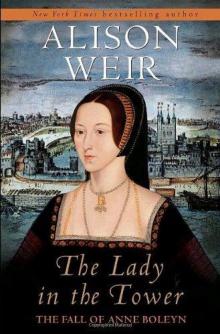 The Lady in the Tower: The Fall of Anne Boleyn
The Lady in the Tower: The Fall of Anne Boleyn Six Wives of Henry VIII
Six Wives of Henry VIII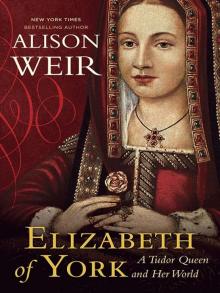 Elizabeth of York: A Tudor Queen and Her World
Elizabeth of York: A Tudor Queen and Her World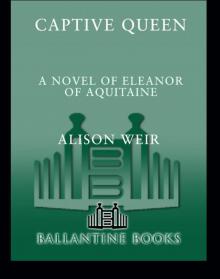 Captive Queen
Captive Queen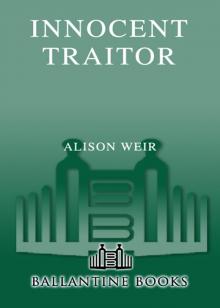 Innocent Traitor
Innocent Traitor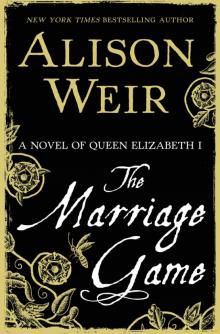 The Marriage Game
The Marriage Game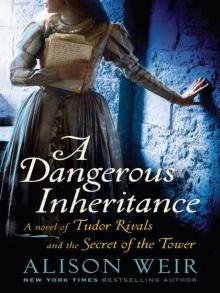 A Dangerous Inheritance
A Dangerous Inheritance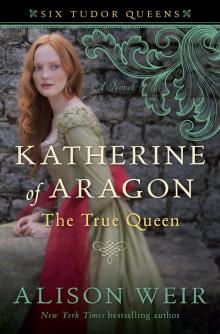 Katherine of Aragón: The True Queen
Katherine of Aragón: The True Queen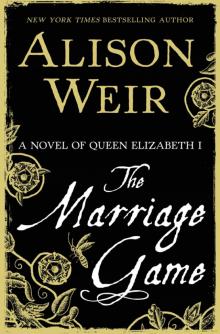 The Marriage Game: A Novel of Queen Elizabeth I
The Marriage Game: A Novel of Queen Elizabeth I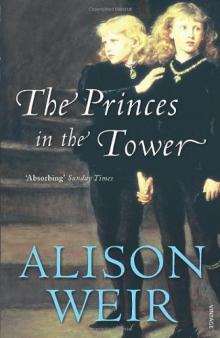 Princes in the Tower
Princes in the Tower Anne Boleyn: A King's Obsession
Anne Boleyn: A King's Obsession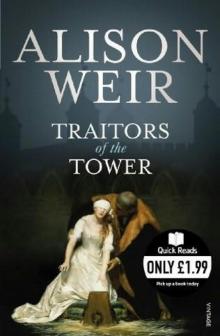 Traitors of the Tower
Traitors of the Tower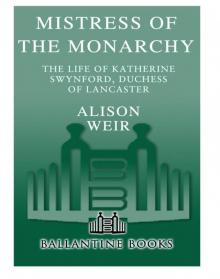 Mistress of the Monarchy: The Life of Katherine Swynford, Duchess of Lancaster
Mistress of the Monarchy: The Life of Katherine Swynford, Duchess of Lancaster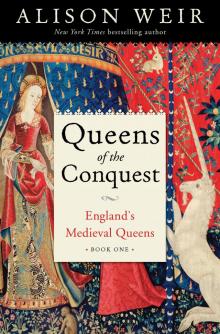 Queens of the Conquest: England’s Medieval Queens
Queens of the Conquest: England’s Medieval Queens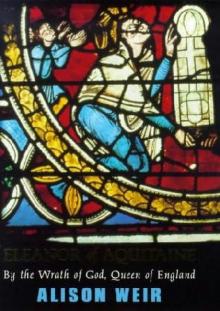 Eleanor of Aquitaine: A Life
Eleanor of Aquitaine: A Life Mary, Queen of Scots, and the Murder of Lord Darnley
Mary, Queen of Scots, and the Murder of Lord Darnley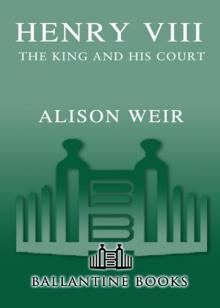 Henry VIII: The King and His Court
Henry VIII: The King and His Court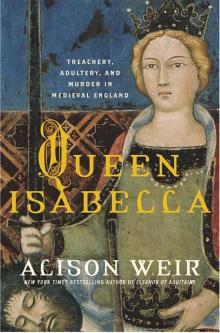 Queen Isabella: Treachery, Adultery, and Murder in Medieval England
Queen Isabella: Treachery, Adultery, and Murder in Medieval England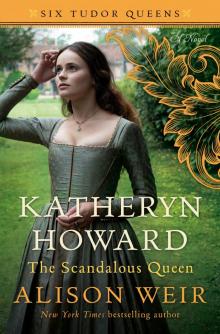 Katheryn Howard, the Scandalous Queen
Katheryn Howard, the Scandalous Queen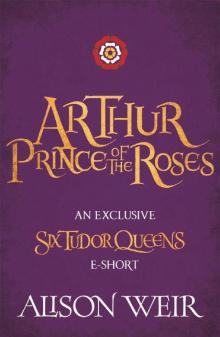 Arthur- Prince of the Roses
Arthur- Prince of the Roses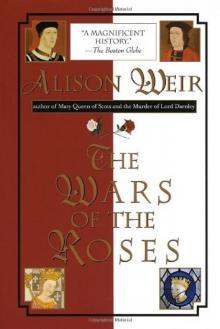 The Wars of the Roses
The Wars of the Roses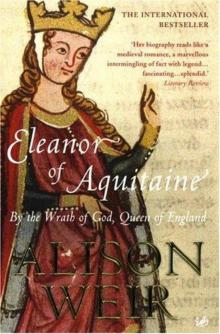 Eleanor of Aquitaine: By the Wrath of God, Queen of England
Eleanor of Aquitaine: By the Wrath of God, Queen of England Mary Boleyn: The Great and Infamous Whore
Mary Boleyn: The Great and Infamous Whore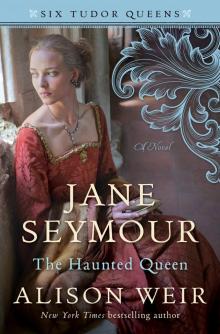 Jane Seymour: The Haunted Queen
Jane Seymour: The Haunted Queen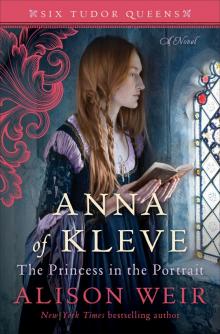 Anna of Kleve, the Princess in the Portrait
Anna of Kleve, the Princess in the Portrait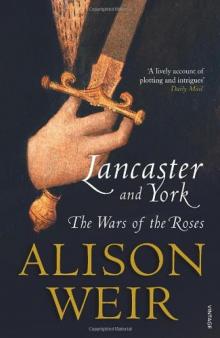 Lancaster and York: The Wars of the Roses
Lancaster and York: The Wars of the Roses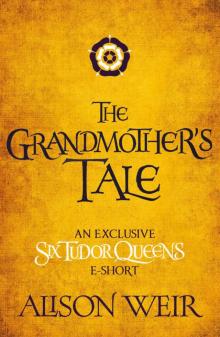 The Grandmother's Tale
The Grandmother's Tale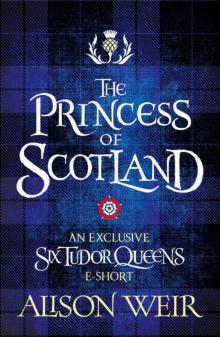 The Princess of Scotland (Six Tudor Queens #5.5)
The Princess of Scotland (Six Tudor Queens #5.5)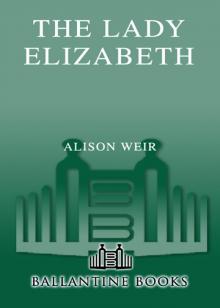 The Lady Elizabeth
The Lady Elizabeth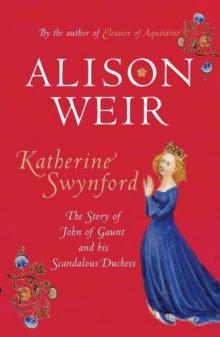 Katherine Swynford: The Story of John of Gaunt and His Scandalous Duchess
Katherine Swynford: The Story of John of Gaunt and His Scandalous Duchess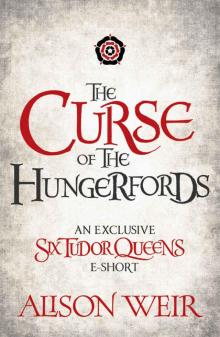 The Curse of the Hungerfords
The Curse of the Hungerfords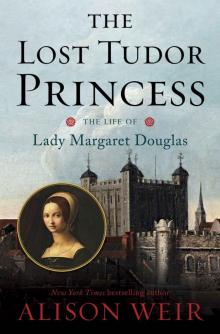 The Lost Tudor Princess: The Life of Lady Margaret Douglas
The Lost Tudor Princess: The Life of Lady Margaret Douglas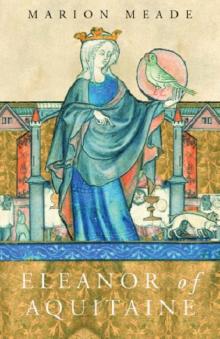 Eleanor of Aquitaine
Eleanor of Aquitaine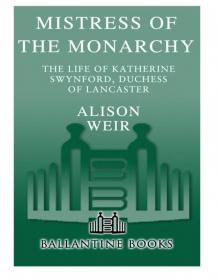 Mistress of the Monarchy
Mistress of the Monarchy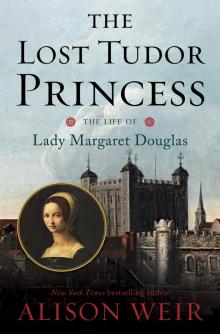 The Lost Tudor Princess
The Lost Tudor Princess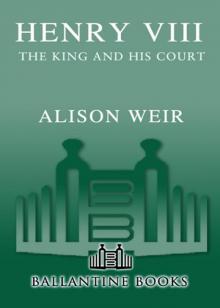 Henry VIII
Henry VIII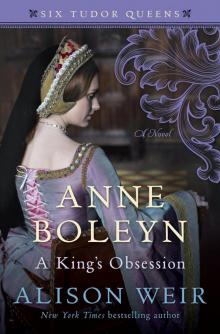 Anne Boleyn, a King's Obsession
Anne Boleyn, a King's Obsession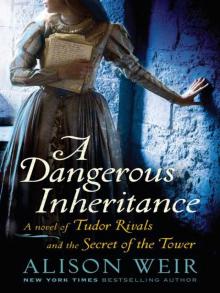 A Dangerous Inheritance: A Novel of Tudor Rivals and the Secret of the Tower
A Dangerous Inheritance: A Novel of Tudor Rivals and the Secret of the Tower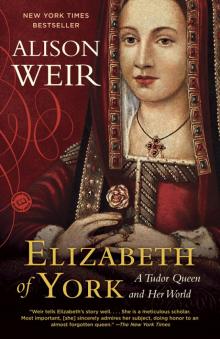 Elizabeth of York
Elizabeth of York Katherine of Aragon, the True Queen
Katherine of Aragon, the True Queen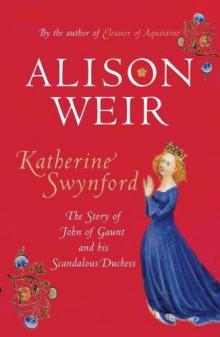 Katherine Swynford
Katherine Swynford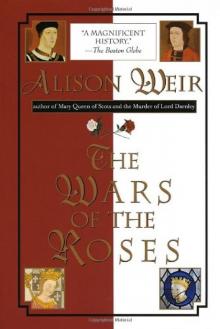 Wars of the Roses
Wars of the Roses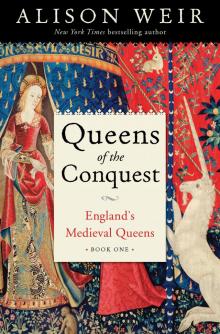 Queens of the Conquest
Queens of the Conquest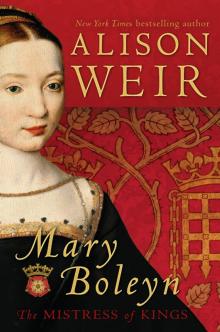 Mary Boleyn
Mary Boleyn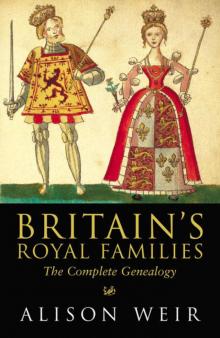 Britain's Royal Families
Britain's Royal Families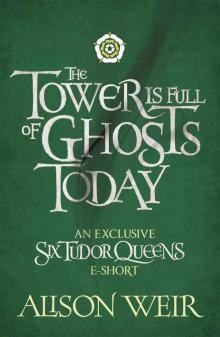 The Tower Is Full of Ghosts Today
The Tower Is Full of Ghosts Today Life of Elizabeth I
Life of Elizabeth I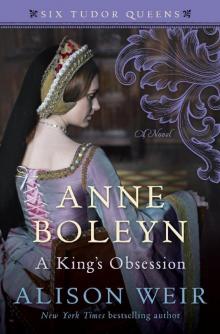 Anne Boleyn A King's Obssession
Anne Boleyn A King's Obssession Lancaster and York
Lancaster and York Jane Seymour, the Haunted Queen
Jane Seymour, the Haunted Queen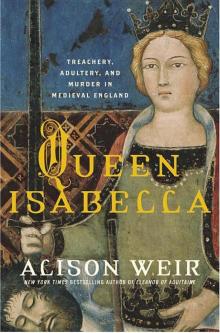 Queen Isabella
Queen Isabella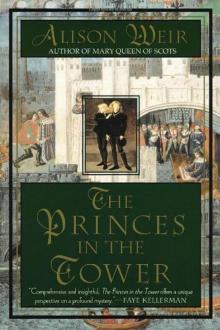 The princes in the tower
The princes in the tower